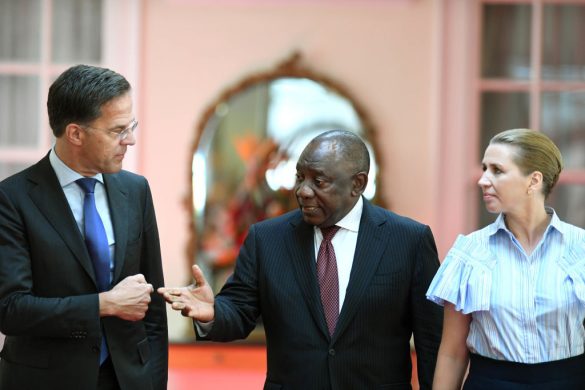En ny undersøgelse fra Verdensbanken viser, at sociale sikkerhedsnet i en række lande i Afrika er ved at tage form fra fragmenterede programmer til reelle systemer til gavn for de fattigste.
WASHINGTON, February 11, 2014 (World Bank): When the recent global economic crisis threatened Africa’s progress in reducing poverty, safety nets emerged as a fundamental way to prevent a reversal of these gains.
A new World Bank review of the use of these programs in 22 African countries shows that safety nets are critical instruments for reducing extreme poverty and increasing shared prosperity.
The review, entitled “Reducing Poverty and Investing in People: The New Role of Safety Nets in Africa”, notes that safety net programs in Africa are working to reduce poverty in a number of ways.
Impact evaluations provide evidence that safety nets help households to meet basic consumption needs, protect assets such as livestock, and invest in their children’s health and education.
Research also suggests that safety nets could potentially boost future well-being and poverty reduction because they help poor households make productive investments today. They can also produce second round economic stimuli in poor areas.
[video:http://www.youtube.com/watch?v=ds_T5TAH9qA]
Safety Nets in Sub-Saharan Africa
Fra enkeltstående programmer til systemer
In most African countries reviewed, safety nets tend to be fragmented and too small to effectively protect the poorest. However, in some countries that are leading the way forward, such as Ethiopia, Kenya, Mozambique, Rwanda and Tanzania, safety nets are beginning to evolve from fragmented standalone programs into robust safety net systems.
Safety nets in Africa have evolved from emergency food aid programs that were often used during periods of drought or food insecurity to regular, predictable safety nets such as cash transfers or cash-for-work programs that are targeted to poor and vulnerable households.
Some of the main tasks that countries must tackle as they move in this direction include improving data collection and monitoring, targeting programs more effectively to make sure that the assistance reaches the households that need it the most, and scaling up existing programs that are already working well.
“Safety nets have evolved differently across Africa but are now taking hold as core poverty reduction instruments,” says Victoria Monchuk, author of the report and economist at the World Bank. “
As these programs are knit together into coherent systems, donor support for them needs to be better coordinated and well aligned with overarching social protection and poverty reduction strategies in each country.”
Lavindkomstlande kan være med
Well-targeted safety nets are affordable in Africa, especially if inefficient public spending can be better targeted to the poorest and if programs can be better harmonized to reduce redundancies. However, donor funding remains important in low-income countries.
With the exception of universal programs such as old-age benefits and general subsidies, donors finance a large share of safety nets in Africa‒–over 80 percent in Burkina Faso, Liberia, Mali, and Sierra Leone.
Middle income countries can already scale up safety nets largely with their own resources. For instance, in Cameroon, which is now investing more in social protection, it would cost only an estimated 0.5 percent of GDP to provide a strong safety net that reaches at least half those living in chronic poverty.
Going forward, the discovery and exploitation of natural resources such as oil, gas and minerals in many African countries could mean greater domestic support for safety nets.
In Tanzania, for example, where there have been major discoveries of natural gas, the government is scaling up its cash transfer program to benefit as many as 900,000 households. This is expected to sharply reduce poverty.
Læs hele artiklen her:
http://www.worldbank.org/en/region/afr/publication/the-new-role-of-safety-nets-in-africa
Læs hele rapporten her:
https://openknowledge.worldbank.org/bitstream/handle/10986/16256/9781464800948.pdf?sequence=1














